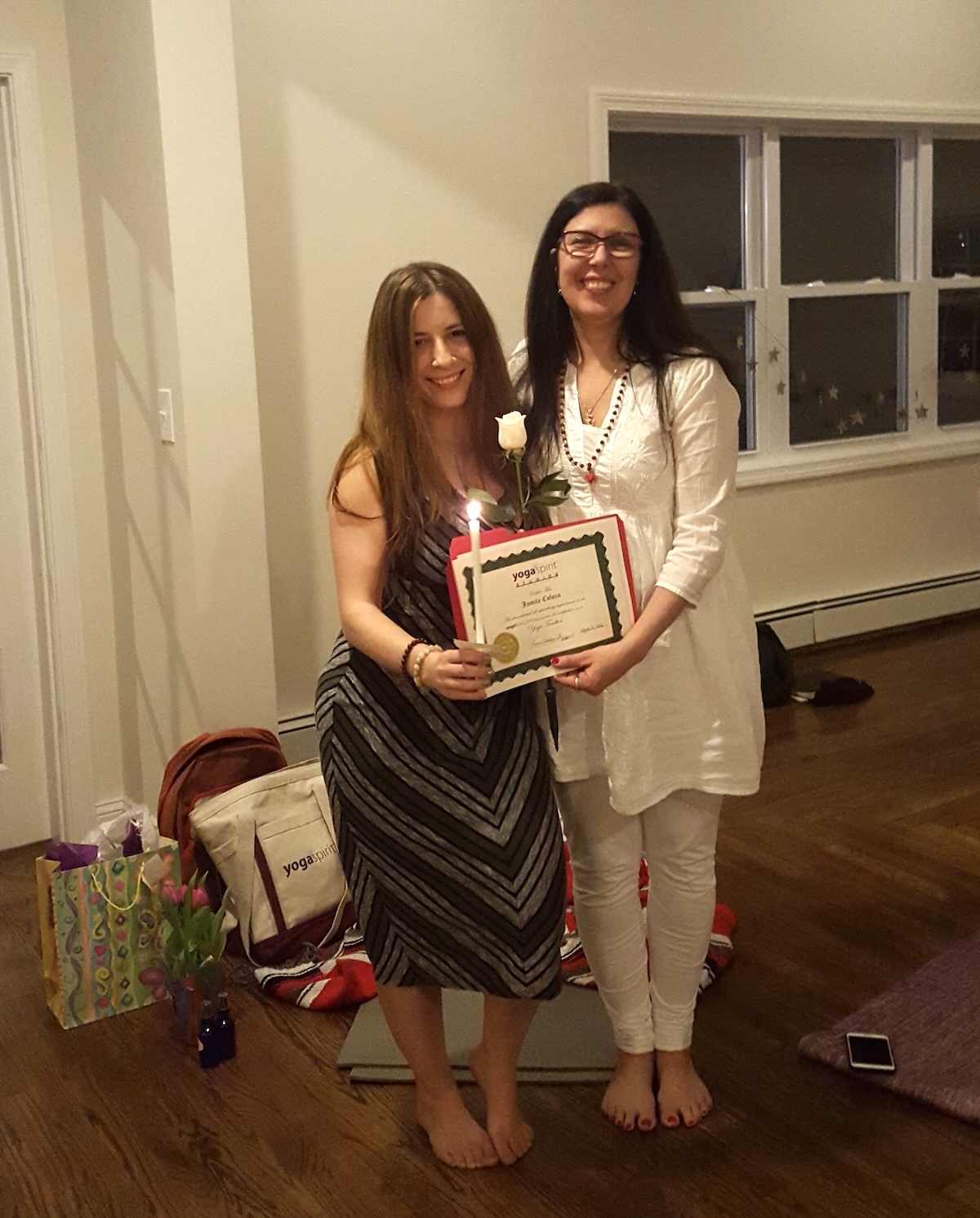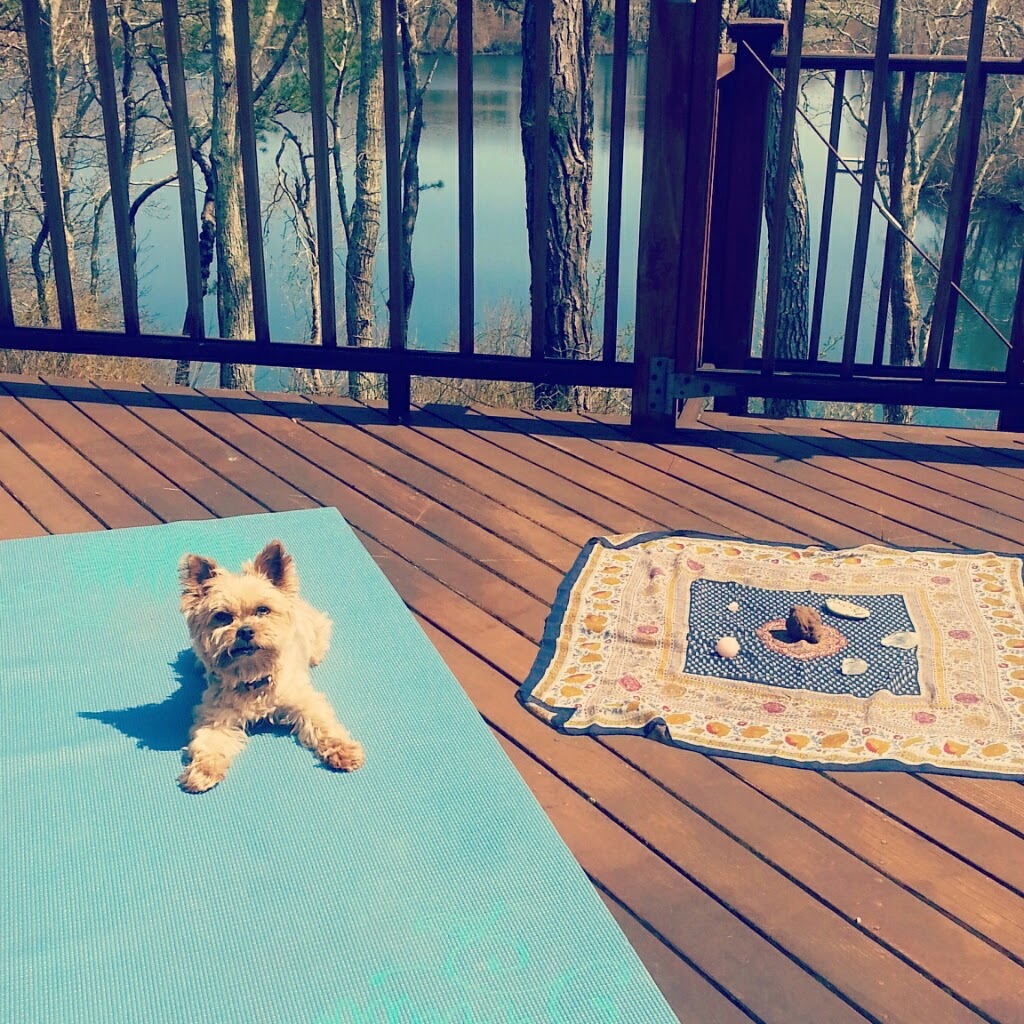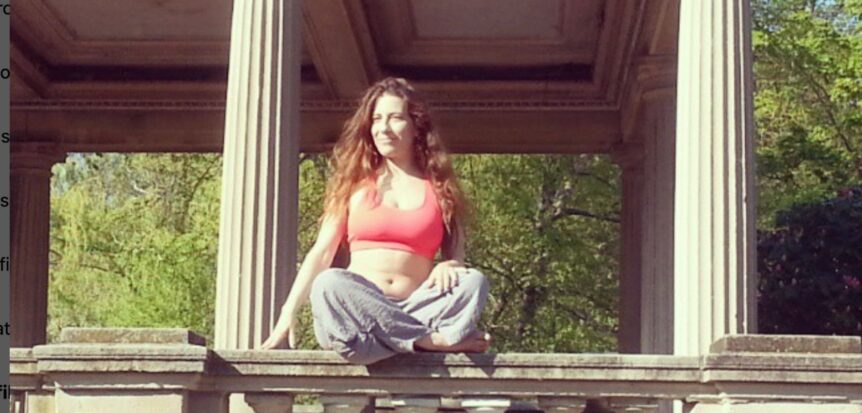My first yoga class was in college while living in New York City, and it was the epitome of what we yoga professionals learn shouldn’t be happening.
I was naturally flexible and confident with this “stretching.” After class, the woman who had invited me started practicing her headstand, and I was compelled to join in. It looked easy!
As I vaulted my legs upward and overhead, the instructor came over to supervise, though I secretly wished she would go away so I could explore this fun pose by myself. Although it had seemed easy on first glance, in truth it was maybe a bit harder than I anticipated. I don’t recall exactly what form I took by the end of my pursuit, but I do remember realizing during my yoga teacher training years later that I had had absolutely no business trying a headstand randomly on my own in my first-ever yoga class, and the teacher had been smartly performing her duty to make sure I didn’t get injured. She could have gone even farther by requesting that I pause and questioning my yoga experience before allowing me to try the pose in her studio.
Mixed levels classes with too many students to provide 1-on-1 attention, the way in which yoga asana appears simpler than it looks, plus of course the human ego, can all lead to a lot of people pushing themselves too hard and even creating injury. When I mentioned I was a yoga teacher once to a physical therapist, he launched into complaints about how many people come to him for healing injuries caused by their yoga practice. From his perspective, yoga was a bad idea. As a yogi, this was hard to hear! But it’s completely understandable given our current industry climate. Which is why I am so proud to share my own yoga lineage and help people understand that yoga can be safe and effective, when done correctly.

My 200 hour yoga teacher training was in 2015-2016 with Kim Valeri Povey of Yogaspirit in the North Shore of Massachusetts. At the time, I was seeking a training program nearby and was fortunate to be living in proximity to such an exceptionally talented trainer. Kim’s story is powerful. She applied yoga to heal herself from injuries resulting from traumatic accidents that had left her with medical diagnoses spelling lifelong limitations and pain. Long story short: yoga turned her diagnoses around. Additionally, her background in both Kundalini and Ashtanga yoga, and ultimately merging the two forms resonated deeply with me. She took a risk straying from these well-worn pathways because she couldn’t choose between them and ended up forging her own path, and I’m grateful for it!
Kim’s teachings emphasized a deep respect and understanding for the body’s anatomy, something that is often neglected by yogis seeking spiritual enlightenment. She also provided thorough education in safety modifications and assists. So many yoga teachers perform minimal assists or none at all, either because they don’t know how or because they’re too shy. Kim taught me that as teachers of asana, we cannot stand in the front of the room and divide ourselves from our students, nor can we make the class our own asana practice and simply move along with them. Kim’s yoga class was the best experience of my life, because she would come over multiple times throughout the class to help me adjust into better versions of my pose. It takes clear communication, mindfulness of people’s boundaries and loads of confidence to take this approach, but it truly allows people’s yoga practice to reach another level.

My year-long training with Kim illuminated all the ways in which my previous practice had been limited:
- I had been skimming the surface of yoga for several years, ignorant of all of its branches and limbs. I had no idea that it was more than just an individual’s pathway, but also a community practice.
- So many poses I had been doing regularly, I had been doing wrong! No teacher had ever corrected me.
- Like most newcomers to yoga, I was always striving for the final pose, never exploring the space where I currently was at.
- I assumed poses constantly “improve,” i.e. get “closer” to their “perfect” form. In truth, there are ebbs and flows, and that’s just right.
- Kim also wove in more ayurveda than your average yoga teacher training into her teachings, which was an unexpected blessing. Yoga and ayurveda are best practiced together; they complement each other like a soul mate marriage, helping each other reach greater heights.
- To elaborate on the above bullet – case in point: doing hot yoga several times a week (especially as a pitta kapha constitution with pitta imbalances) was not helping me.
The Yogaspirit curriculum honored the spiritual and physical aspects of the practice as well as the professional aspect of becoming a yoga teacher. Kim’s experience as a a self-built success and entrepreneur inspired us all. I don’t think I have ever met someone with her unique combination of life lessons, spiritual depth, diverse experience and grounded, practical life knowledge. Kim understands how to honor the most esoteric aspects of yoga and ayurveda while making it a part of a modern lifestyle.
The most popular forms of yoga of today are whitewashed and commercialized versions of spiritually-infused fitness classes, triggering students and yoga teachers alike to seek validation through achieving the perfect final pose. The competitive nature of this approach, even when it’s only with one’s own self, is counterintuitive to the goals of yoga. It’s spiritually as well as physically dangerous. It was worth taking my teacher training simply to deepen my yoga practice, whether or not I ever taught a single class, as it helped me access a truer version of yoga, become more embodied, and engage with yogic traditions and culture more conscientiously. I recommend every yogi to consider a teacher training program if it’s accessible. Knowing that yoga is inaccessible to so many, I also encourage yoga teachers to pursue trainings that are respectful to this indigenous wisdom, comprehensive in safety education, and genuinely supportive of career-building with enough practical professional curriculum. Your success as a yoga teacher is also your students’ success, and the world needs you to prosper, bringing more healing to those in need.

My best student. He was born knowing sphynx pose.
